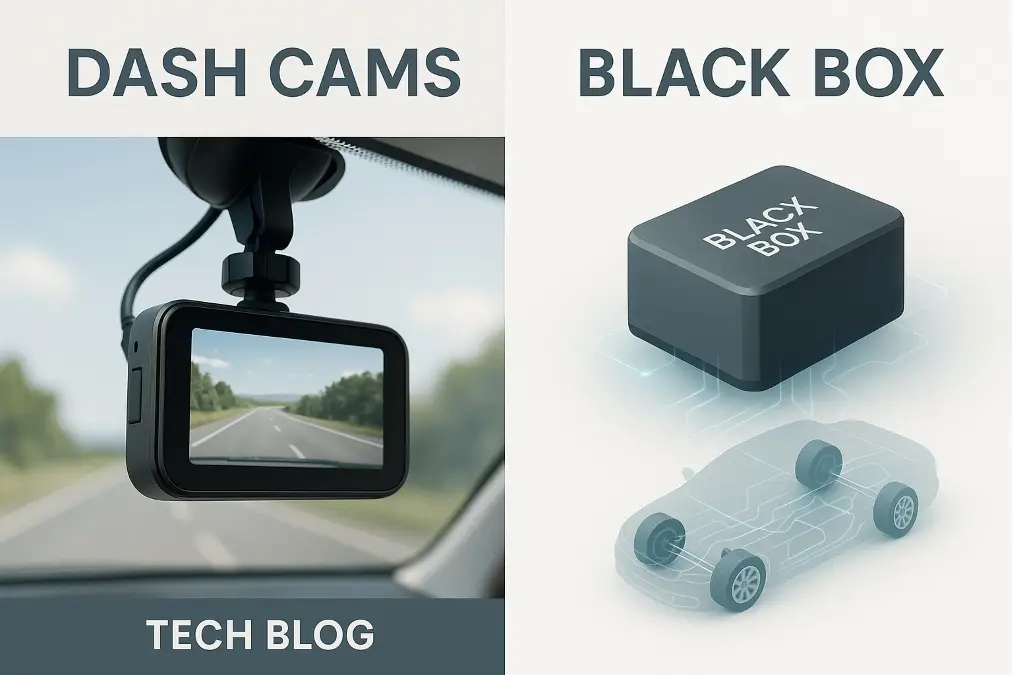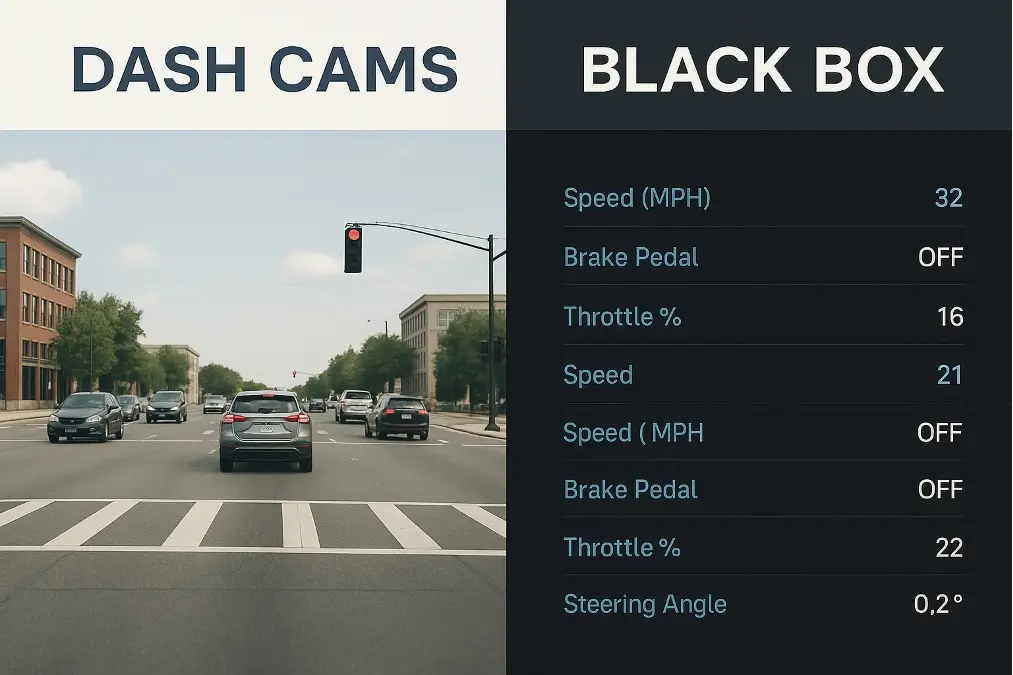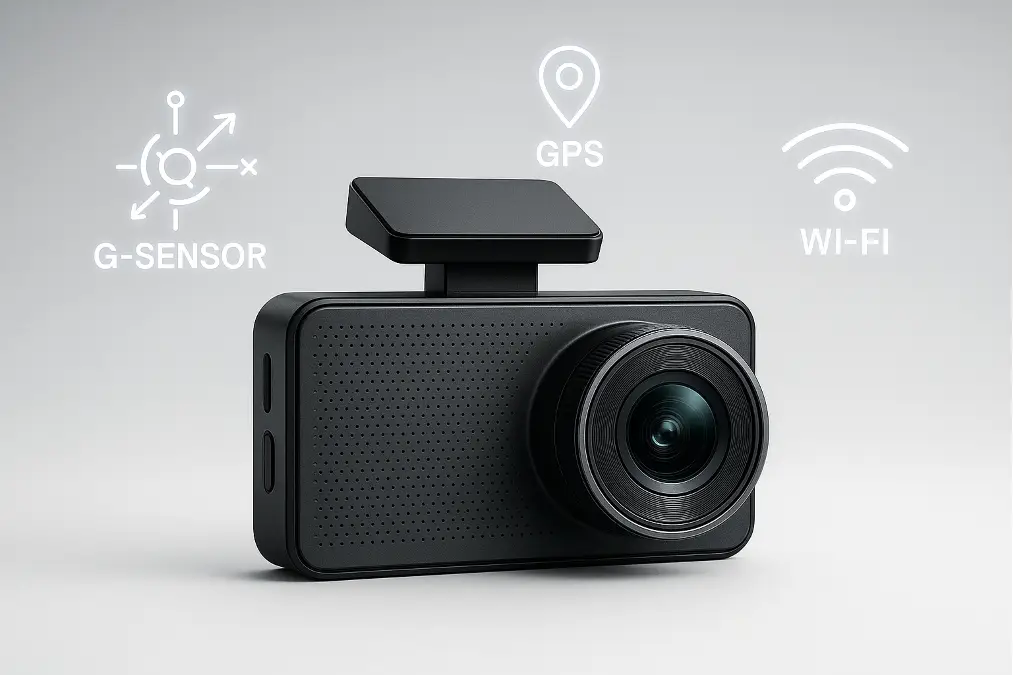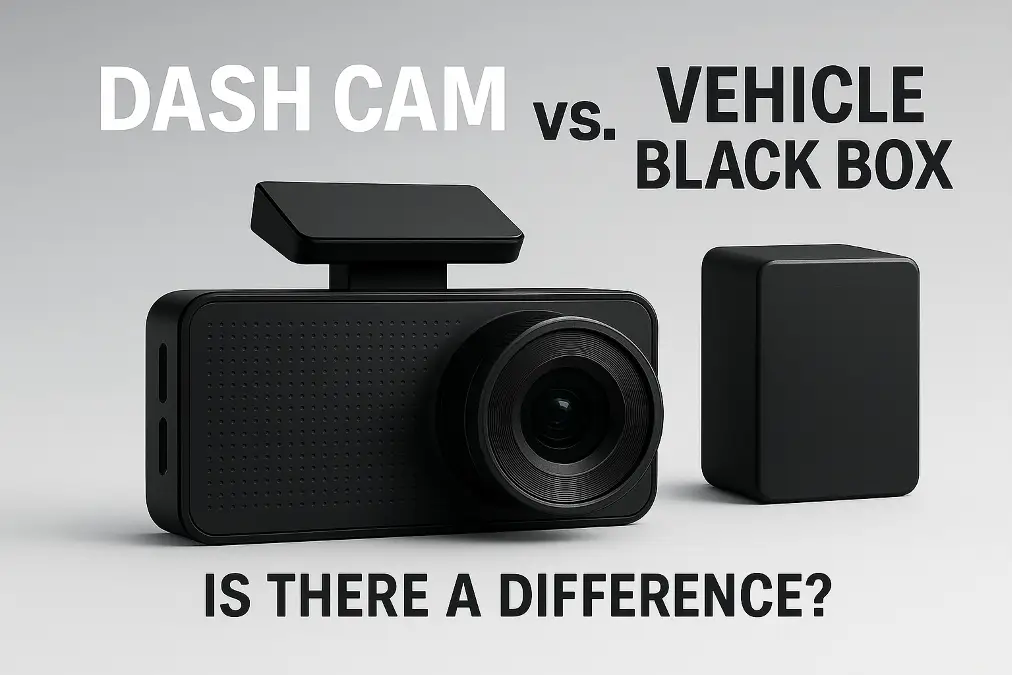Are you confused by the terms 'dash cam' and 'vehicle black box'? This mix-up can be critical after a crash. Let me explain the key differences for your safety.
Yes, there is a major difference. A dash cam records external video and audio. A vehicle black box, officially an Event Data Recorder (EDR), records internal vehicle data like speed, braking, and airbag deployment during an incident. They protect you in different ways.

I've seen this confusion cause real problems for drivers. As a tech founder in automotive safety, I believe clarity is crucial. We often think they do the same job, but their functions, the data they collect, and how that data is used are fundamentally different. To really understand how to protect yourself on the road, we need to dive deeper into what each device actually does.
What Specific Data Does Each Device Record?
Do you know exactly what information is saved after an incident? Assuming you have the right data can be a mistake. Let's look at the precise data points each records.
A dash cam primarily records video and audio. More advanced models add GPS location and speed. A vehicle black box (EDR) records no video but captures critical vehicle telemetry1 like engine RPM, throttle position, brake status, and seatbelt usage just before a crash.

The core mission of each device dictates the data it captures. At VST Tech, we build systems designed for specific safety goals, and understanding this distinction is key. A dash cam is your visual witness, while an EDR is your vehicle's technical stenographer.
The Dash Cam's Focus: Visual Context
A dash cam's job is to see and hear what's happening around your vehicle. Its sensors are a camera lens and a microphone. This provides invaluable context: Did the other driver run a red light? Did they swerve into your lane? This is evidence that is easy for anyone—police, insurance agents, lawyers—to understand immediately.
The EDR's Focus: Crash Telemetry2
An EDR, on the other hand, is integrated deep within the vehicle's control systems. It doesn't see the world; it monitors the car's internal state. It's designed to capture a snapshot of data in the seconds just before, during, and after a crash is detected, usually by the airbag control module. This data is purely technical.
Here's a simple breakdown:
| Data Point | Standard Dash Cam | Advanced Dash Cam | Vehicle Black Box (EDR) |
|---|---|---|---|
| External Video | Yes | Yes | Geen |
| Audio Recording | Yes | Yes | Geen |
| GPS Location & Speed | Geen | Yes | Yes |
| G-Force/Impact Data | Geen | Yes | Yes |
| Brake Pedal Status | Geen | Geen | Yes |
| Steering Wheel Angle | Geen | Geen | Yes |
| Throttle Position | Geen | Geen | Yes |
| Airbag Deployment | Geen | Geen | Yes |
| Seatbelt Status | Geen | Geen | Yes |
As you can see, they are not recording the same things. The EDR answers "What did the car do?" while the dash cam answers "What did the driver see?"
How Is The Information Used Differently After A Crash?
Imagine you're in an accident. Do you know who accesses this data and how? The process isn't the same, which can impact your insurance claim or legal situation.
Dash cam footage is yours to use immediately. You can show it to police or your insurance to prove what happened. Accessing EDR data is complex. It requires special equipment and legal permission, and is typically used by accident investigators or law enforcement for official reconstruction.

The accessibility and purpose of the data from these two devices are worlds apart. One is designed for the consumer, and the other is for forensic analysis.
Dash Cam Data: Immediate and Personal
The data from your dash cam (usually on an SD card) belongs to you. After an incident, you can remove the card, download the video file, and immediately have evidence. You control who sees it. You can email it to your insurance provider to speed up a claim or show it to a police officer at the scene. It's straightforward, personal proof. Its primary use is to establish fault and provide a clear, visual narrative of the event. For a DIY expert like Jacky, this is a simple, self-managed system.
EDR Data: Official and Regulated
The EDR is a different story. The data is stored in a heavily protected module within the car. You cannot simply access it. It requires a specialized piece of hardware called a Crash Data Retrieval (CDR) tool3, which connects to the vehicle's OBD-II port or directly to the module. More importantly, accessing this data is legally regulated. In many places, the vehicle owner's consent, a warrant, or a court order is required. This data is not for proving fault in a simple fender-bender. It is used by professionals for in-depth accident reconstruction to determine the physics of the crash—how fast the vehicles were going, if brakes were applied, and the severity of the impact.
Are Advanced Dash Cams Becoming More Like Black Boxes?
Technology is always advancing. Are dash cams just for video anymore? Ignoring new features means you might be missing out on a new level of protection for your vehicle.
Yes, to an extent. High-end dash cams now include G-sensors to automatically lock files on impact and GPS to log speed and location. While this mimics some EDR functions, they still don't capture core vehicle diagnostics like braking pressure or steering angle. They complement, but don't replace, an EDR.

This is an area I'm passionate about at VST Tech. We are constantly pushing to integrate smarter technology into our camera systems to give drivers more complete protection. Modern, high-quality dash cams are now data-gathering devices that do more than just record video.
Bridging the Gap with New Sensors
Let's break down the key technologies that make a dash cam "smarter" and more like a black box:
- G-Sensor (Accelerometer): This is the most important feature. It measures G-forces (acceleration, hard braking, sharp turns) and impacts. When it detects a force that exceeds a certain threshold, like in a collision, it automatically locks the current video file, preventing it from being overwritten. This is the dash cam's version of "event detection."
- GPS Logging: An integrated GPS module stamps your video footage with real-time speed and location coordinates. This data is overlaid on the video or saved in a separate log file. It provides crucial, objective data to support the visual evidence.
- Parking Mode: Advanced parking mode uses the G-sensor and sometimes motion detection to act as a surveillance system when the car is off. If someone bumps your car, the camera wakes up and records, capturing evidence even when you aren't there.
However, it's critical to understand the limits. A dash cam is an aftermarket device. It cannot access the vehicle's internal computer (the CAN bus) to know if you pressed the brake or how far you turned the steering wheel. It provides data about the event, but not from the vehicle's core systems. It's a powerful supplement, not a replacement.
Conclusie
In short, a dash cam records what happens outside your car, while a vehicle black box records what your car itself does. Both are vital tools for total driving safety.
-
Discover the significance of critical vehicle telemetry in understanding vehicle performance and safety during incidents. ↩
-
Discover how crash telemetry data is utilized in accident investigations, providing insights into vehicle performance during incidents. ↩
-
Understanding the CDR tool is crucial for accessing EDR data, which is vital for accident analysis and legal processes. ↩


